Matt Bellamy on Yngwie Malmsteen-inspired solos, recording with Jeff Buckley's Telecaster and his secret to beaming blues riffs into Muse’s space-age guitar sound
The Muse frontman takes us behind the most explosive guitar album of 2022, made with a mountain of gear and taking inspiration from Iron Maiden and Slipknot
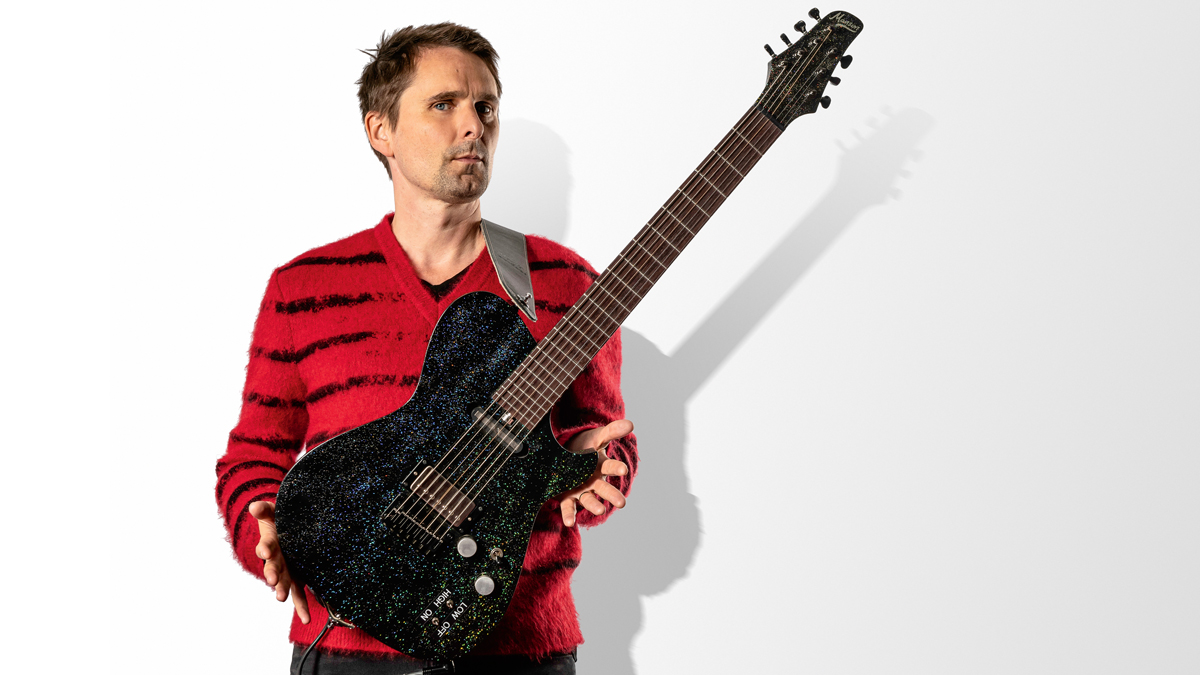
Matt Bellamy loves a heavy riff. Now, more than ever. “I definitely think a bit more metal has crept in this time,” he says of the new Muse album Will Of The People.
He’s always had it in him, as evidenced by early Muse bangers like New Born and Stockholm Syndrome, which helped make the trio one of the most successful alternative rock acts of the modern age. But with this new album, the singer/guitarist is really going for it in terms of sheer sonic weight.
Will Of The People is a head-twisting celebration of heaviness – from its opening title track to its unequivocal closing number We Are Fucking Fucked. It’s the sound of a group finding new ways to catch lightning in the bottle and hardwire galactic riffs into stadium-conquering anthems.
Tracks such as Kill Or Be Killed and Won’t Stand Down live up to the metallic defiance of their titles, while You Make Me Feel Like It’s Halloween – despite being a synth-led throwback to the group’s electro influences – features the most overtly shred guitar run ever heard on a Muse album, a throwback to the ’80s heyday of shred game-changers Yngwie Malmsteen and Paul Gilbert.
I started listening to players like Hendrix and Cobain and felt, ‘You know what? I can do chaos. I can’t do this unbelievable technical precision but what I can do is create a mess!’
This is also the first Muse album on which Matt has used the famous guitar he bought in 2020 from Parisian dealer Matthieu Lucas – the 1983 Telecaster previously owned by the late Jeff Buckley.
The guitar has an unusually glassy tone thanks to a slight defect which helps it shine just as spectacularly today as it did on Buckley’s classic 1994 album Grace, but when Matt plays it on this new album’s title track, it’s for colour.
The heavy riffs are delivered via his Manson guitars, the brand he has sworn by since the early days of Muse, and in which he invested in 2019, becoming a majority shareholder in the company.
Get The Pick Newsletter
All the latest guitar news, interviews, lessons, reviews, deals and more, direct to your inbox!
His long association with Manson is one of the key subjects he discusses when he talks to TG on a warm summer’s day in London. He also speaks of the unique qualities in that famous Tele and his search for the perfect fuzz pedal. And he reveals how the heaviness in Muse’s new album was inspired by his teenage obsession with Iron Maiden and his young son’s love of Slipknot...
That’s one thing I learned from Rage Against The Machine: you can get away with straight blues riffs as long as you make the production unique
There are some very classic Muse ingredients on the new album’s title track – from the down-tuned single-note riffs to a generous helping of octave fuzz.
“It’s pretty much a traditional blues riff, you know? That’s one thing I learned from Rage Against The Machine: you can get away with straight blues riffs as long as you make the production unique. That’s the key! I think it was the same with The White Stripes.
“Sometimes you’ll sit down and play a pentatonic riff and think, ‘Oh, that sounds very familiar, something from the ’60s or ’70s, like Hendrix or whatever!’ I think we first learned this approach on Supermassive Black Hole, where we did everything we could to make a blues riff sound as futuristic and strange as possible.
“We took the same kind of production approach with Will Of The People, because it’s mainly one main idea the whole way through and one of the simplest tracks we’ve done, at least on this album.”
Do you remember what fuzz pedal you were using on that one?
“We spent a lot of time working on those tones. Off the top of my head, it’s hard to know what got used where as we had around 50 fuzz pedals! DI’d fuzz is something we’ve gotten a lot out of over the years. It’s a very underrated technique, more modern-sounding than an amp. The classic is the [Electro-Harmonix] Big Muff, so I usually start from there and veer off into others.
“I’m actually in the process of developing a fuzz pedal that has a few features I’ve always made use of, all built into the pedal. It will have an EQ curve that you can slide from left to right or invert to create more of a scoop. I usually find most fuzz pedals to be a little bit too full-range. Especially in how they sit in relation to the bass, drums and vocals.”
So where’s the sweet spot, exactly?
“For me it tends to be around 600 to 900Hz. It’s in this low, kind of girthy and middley area that sits nicely above the bass guitar but comfortably below my vocal... which is more classical and theatrical than your typical rock growl. I don’t like too much crossover with where my vocals sit.
“Finding the right fuzz pedal to push that low-mid area was something we spent time on. And even after recording, whatever pedal we use, there will also be a lot of intense EQ work. So that’s what led me towards trying to develop something. I haven’t gotten there yet. I’m working with a few people to see how that feature can be built in, and then we’ll make it available for everyone.”
I learned how to counterpoint and write Bach-like stuff without even needing to play anything, just in my head. I’ve always been drawn to things I didn’t fully understand
That’s exciting news. Will it be coming through Manson?
“Yeah, I think that would make sense. I could probably do it on my own but we have the team there who can check all of the electronics. It makes sense to keep it all in-house.
“We don’t have a release date planned yet, we’re still researching. Hopefully it might be something we can come out with later this year. And it will be based on that sound you hear on Will Of The People and Supermassive Black Hole, which both rely on DI’d fuzz.”

With its thrash metal feel and palm-muted chromatic dissonance, Kill Or Be Killed could easily be one of the heaviest songs you’ve ever written...
“For sure! I’m trying to think of where exactly it came from. I mean, metal has always been around for us. When we were growing up, we were listening to bands like Iron Maiden. Dom [Howard, drums] was really into them as well.
“And though we connected more through Nirvana, Rage Against The Machine and The Smashing Pumpkins, we always had this love for ’80s metal. It kinda hung around a little bit, which is where you might pick up on the harmonic minor scales we use. Metallica were also a big one for us, but Iron Maiden were the British band and also felt a bit more punk rock in ways.”
Especially on those early albums, one might say.
“It was more of a punk rock take on those harmonic minor scales. The song Phantom Of The Opera [from Iron Maiden’s self-titled debut album, 1980] doesn’t feel as bloated or overtly classical as other metal songs. There’s still something quite angry and scary about it. That’s why Maiden are a band we’ve always looked up to.
“That usage of the harmonic minor scale and the progressive approach to arrangements is something that we share, even if we never sounded like them and live in a different genre. We have a lot of respect for them as musicians, especially Steve Harris, who is one of the best bass players around. You always hear him doing really cool and busy things.
“After that I got into bands like Deftones. I wouldn’t call Rage Against The Machine metal necessarily, but they’re one of my favourites. Someone played me some Gojira a while back and I really got into them. I’m sure some of that crept in.”
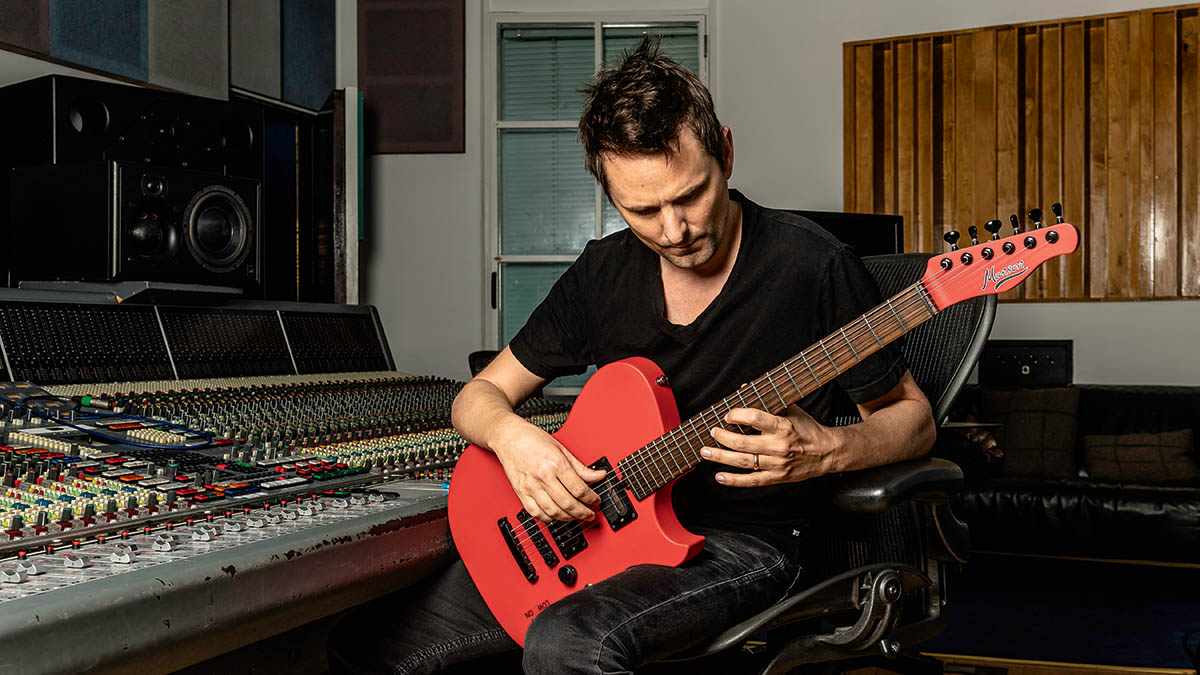
Well, there’s even some double bass drum pedal on this new album.
“Yes! This is the first time I’ve managed to persuade Dom to use one. You can hear on Kill Or Be Killed [makes machine gun noise]. That’s not really his style of playing, but I really pushed him on this album and said we should bring it into the equation when needed, like there and the middle section of Won’t Stand Down. He had to practise it for a while.
“If you’re not naturally a double bass drum player, it’s not an easy thing to transition into. He’s always been more of a hi-hat player. But when you’re combining chugging on a guitar with that double bass drum, you’re automatically putting yourself in a metal world. I’m glad we’ve got that now. It’s a new dimension for this band that we might expand on in the future.”
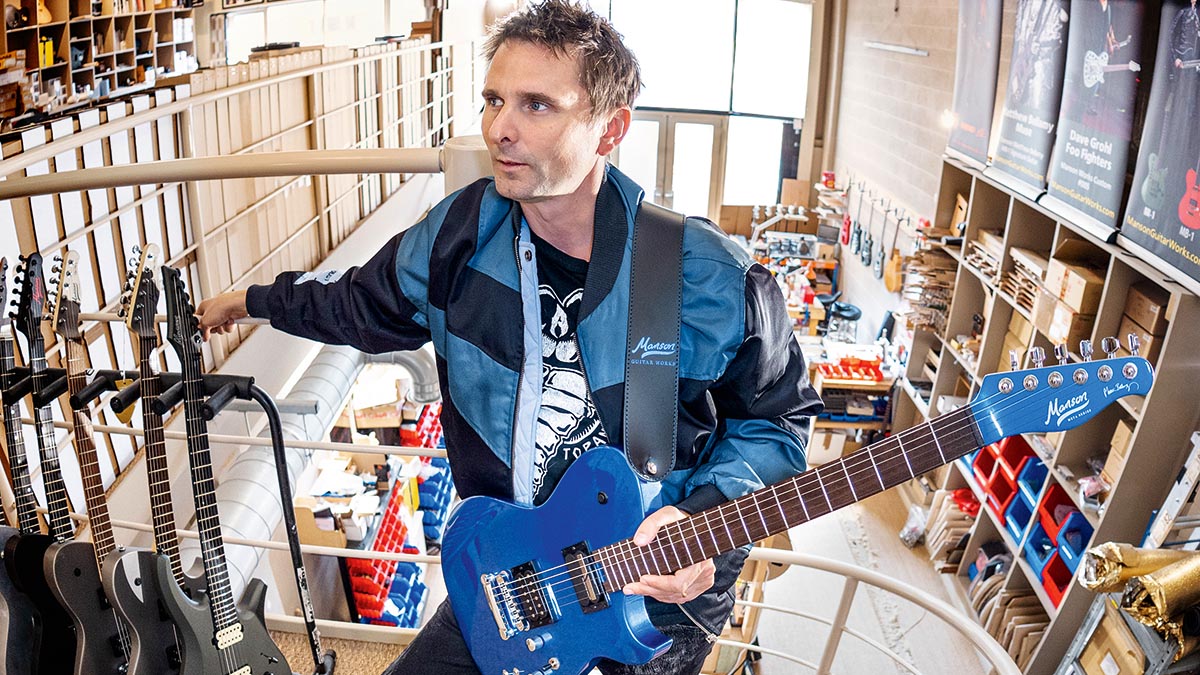
There’s a solo in You Make Me Feel Like It’s Halloween which ends with what sounds like an Yngwie Malmsteen lick. Is he someone you’ve ever listened to?
“Oh, brilliant! I haven’t listened to him in a while, but Yngwie was one of those people I got into in the early ’90s when I first started playing. Clearly back then, I thought there was a chance! After a while I realised I simply couldn’t get to where he was and sort of veered off towards more classical and flamenco guitar styles.
“Then I started listening to players like Hendrix and Cobain and felt, ‘You know what? I can do chaos. I can’t do this unbelievable technical precision but what I can do is create a mess!’ So I went down the road of noise, chaos and carnage... and little elements of the other things stayed with me. And I think you’re probably right, some of the fast-moving harmonic minor ideas will have come from players like that.”
Having been a loyal signature artist for two decades, you’re now a majority shareholder in Manson Guitars. When did you first try one and what did it bring to your playing?
“I grew up with the Manson shop nearby, which is where they made guitars too. It was the same place back then. There were a few guitar shops on that high street but this one always felt more authentic. You’d go in there and people would be actually building things in front of you, making or fixing bits.
I’ll play a Les Paul and Led Zeppelin riffs will keep flying out, every time
“The instruments themselves felt like they had a certain sense of precision and durability which led me towards wanting to playing heavier music. The primary attraction was that whenever I pick up a Stratocaster I tend to play bluesy. At its best, it’ll be along the lines of Clapton or Hendrix.
“They never really felt right for trying to create something new. With Muse, we knew we were coming in at the tail end of rock music’s innovation and longevity in the zeitgeist, if you like. We had to do something to try and stand out, to be new in some way or another.”

How about Gibson guitars – what might they do to your playing?
“Yeah, it’s similar with them as well. I’ll play a Les Paul and Led Zeppelin riffs will keep flying out, every time [hums riff to Zep’s Heartbreaker]. I don’t know what it was about the bluesiness of it all, not that I’m against blues, but it always took me to something that felt familiar from the past, in a way that I didn’t think was good. I wanted to explore unique sounds.
“So I got chatting to Hugh Manson in the late ’90s. I noticed that as soon as I picked up any of his guitars, I didn’t go to any of those retro riffs I associated with Fender or Gibson. He also gave me an opportunity by saying he could build anything I wanted, so I started to think about adding effects pedals or Kaoss Pads.
“The idea was that it could be bespoke. I could actually do whatever I wanted, any shape or finish. I could create my own identity through these guitars.”
The fact you’ve used them on pretty much every album says it all...
“I think the only time we’ve used no Manson guitars was the first album, Showbiz, and that’s because I couldn’t afford one. As soon as I had enough money, I went straight in. I actually bought the guitar I used for the song Citizen Erased from the second album, a seven-string.
“Then when I had a bit more money, I went in asked for a fully aluminium one based on the Delorean from Back To The Future, with things built in like a phaser, a Tom Morello-style killswitch... Honestly, I don’t think I’d have created Plug In Baby without that guitar.
The ability to invent and create any kind of guitar I wanted heavily informed what direction Muse went in, at least guitar-wise
“I’d pick it up and strange things would come out. It just felt new to me. So the ability to invent and create any kind of guitar I wanted heavily informed what direction Muse went in, at least guitar-wise. It’s been a close relationship ever since.
“Pretty much all my guitars are from them. I’ve gone through quite a few, too, throwing them around on stage! Hugh got to a point where he decided to retire roughly five years ago and felt it was natural to come to me and see if I wanted to take it to the next stage.”
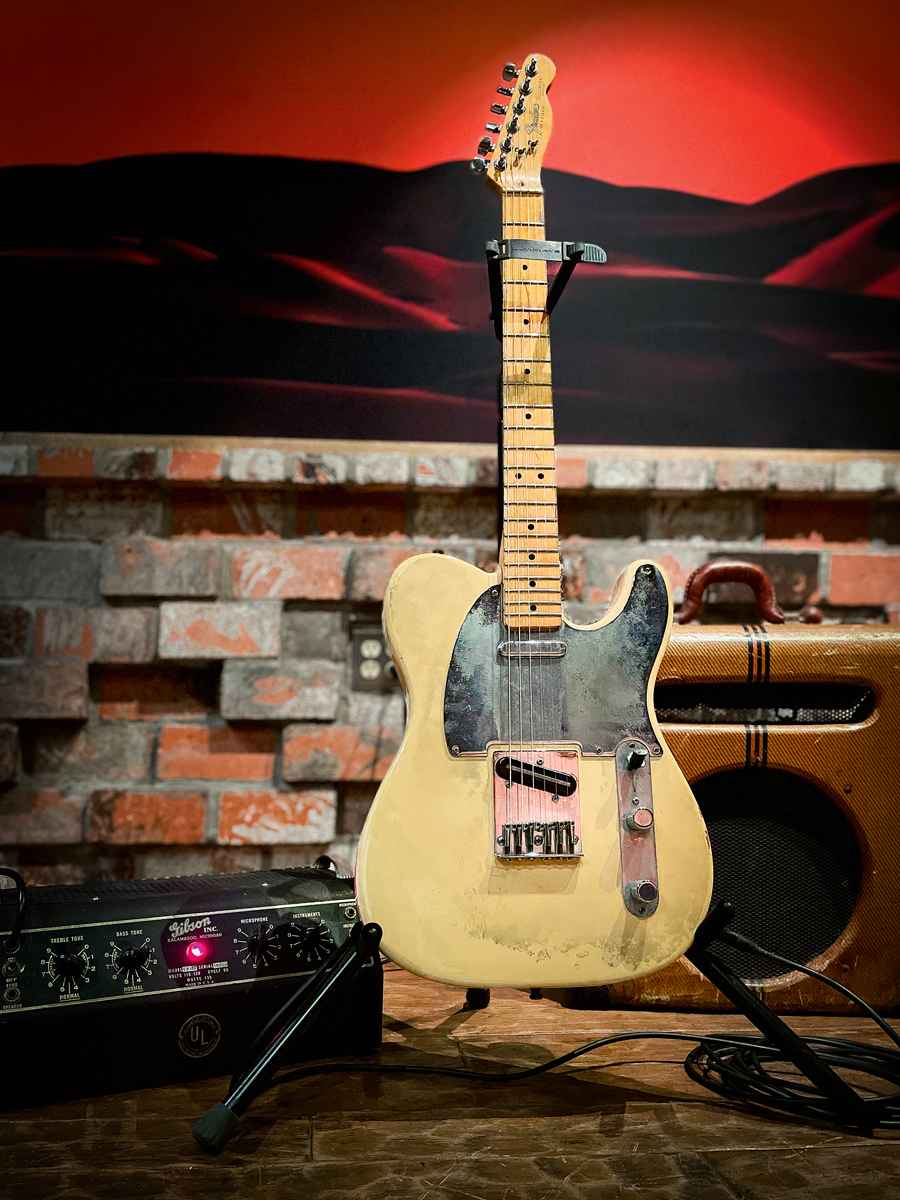
You bought Jeff Buckley’s Grace Tele in 2020. We’re dying to know – what’s it like to hold and plug in, baby?
“It’s amazing. What’s interesting about it is that there is a slightly strange issue with the pickups that’s never been corrected. It’s very slightly out of phase in the middle position with both pickups blended, which is odd because it sounds great. It has this glassy kind of tone, a bit like when you play the highest notes on a piano where there’s that natural sustain.
I’d say the Grace Tele is probably the best clean-sounding guitar I’ve played, if you’re going for a very clean sound like on Hallelujah
“It’s that very plinky sound. It also has this very unusual clarity between each note, this total separation. I didn’t want to touch anything or change anything, but I took it to Manson so we could look at the electronics and analyse what was going on there. It’d be nice to replicate those pickups at some point so people could have their own version.
“I’d say it’s probably the best clean-sounding guitar I’ve played, if you’re going for a very clean sound like on Hallelujah. Just plug into a Fender amp and it sounds exactly like that. It’s one of those things that will make your hairs stand up as you’re playing those parts. It’s a very unique guitar, I’ve never known anything else that sounds like it.”

Can you tell us what other non‑Manson favourites we’d find in your collection?
“There’s one in particular I go to and that’s a Stratocaster Relic. It’s not an actual vintage from the ’60s but it was made in the late ’90s based on one of those old ones. That’s what I turn to for neck pickup sounds, which I don’t use often, I’m primarily a bridge pickup player.
“When I go to the neck, most of my Manson guitars have a sustainer pickup in that spot, which isn’t really made for amazing tones, it’s more there to sustain the strings. So on occasions I’ll go to the Relic. I’ve used some older vintage Strats over the years too, one example being the bluesy solo from the song Uprising, but I don’t use them often.
“On this album, instead of going to the Strat, I went to the Jeff Buckley Tele – in Will Of The People, my Manson guitars are doing the chunky riff parts but the higher guitar is that Telecaster. And for Won’t Stand Down and Kill Or Be Killed I used a multi-scale fanned fret Manson.”
That’s also new ground for you, right?
“Yeah! You can really dig into the riffs on those guitars because of the scale length, you don’t get that floppy thing that happens when a six-string is tuned down. But at the same time I can play the high reggae-like chords you hear in the verses of Won’t Stand Down. I’m just trying to think of other things I own...
Our bassist Chris is a pretty serious collector, he’s got a museum of amazing instruments. That’s also another reason why I don’t have many. If I ever needed anything, I’d just ask him
“I’ve got a 1953 Gibson Goldtop. I don’t use it very often but it’s there to look at. I’m scared to touch it, to be honest, because of how much it’s worth! I’ve got a couple of Strats. There’s an Aloha Strat, which is the metal one that was a rare one from 1991 or 1992. There was a limited run of them.
“That actually helped inspire the aluminium Manson later down the line. I’m not a big collector because I’m so Manson-based! The Jeff Buckley guitar really is the first time I’ve forked out some serious money for a collectable guitar. I guess it could be the beginning for me!
“Our bassist Chris [Wolstenholme] is a pretty serious collector, he’s got a museum of amazing instruments. That’s also another reason why I don’t have many. If I ever needed anything, I’d just ask him. So maybe it’s time to start getting a collection going!”
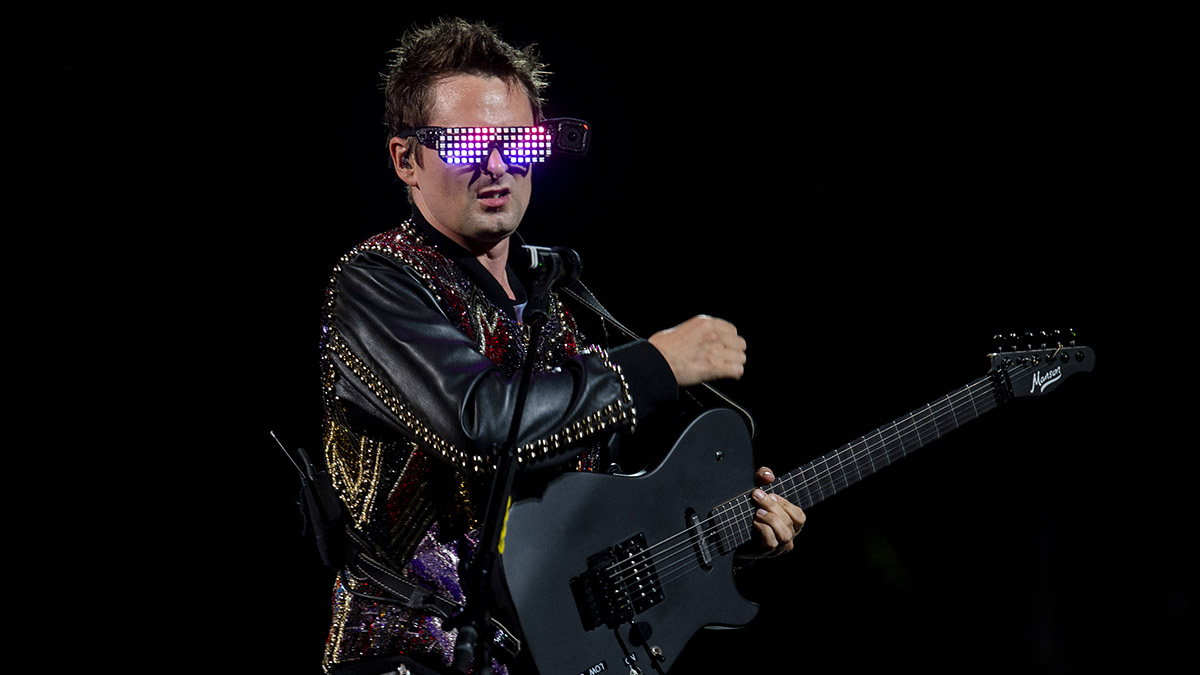
As for guitar amps, are your Diezel VH4s and Vox AC30s still the main workhorses?
“Yeah, those are the classics. If I’m going for really heavy single-note riffs, the Diezel will usually be an essential feature. I’m not a huge fan of double-tracked guitars, but I am a big fan of having multiple amps being recorded at once through one guitar. You get the different responses which can almost create a double-tracked sound, even though you’re only playing once.
I’m lucky to have this extremely rare Marshall, it’s a JTM45 and one of the first 50 amps Jim Marshall built himself
“I have a 1964 AC30 and a 1970, too. They’re the ones which Brian May and The Edge use a lot, with the top boost. They’re specific from those years and can be very hard to find. I’m lucky to have this extremely rare Marshall, it’s a JTM45 and one of the first 50 amps Jim Marshall built himself. It’s basically the same one Jimi Hendrix used. That’s like a museum piece.
“Anyone that knows the history of amps will be like, ‘Oh my god, what is this!’ and won’t believe I’m using it instead of keeping it behind glass! It was literally hand built by Jim Marshall and it sounds so Hendrixy, it’s insane. Sometimes I might use a modded JCM800 for a Tom Morello tone. There were a couple of extra little things which crept in on the sides. There was an Orange, we were trying to dial in a Slipknot kind of sound…"
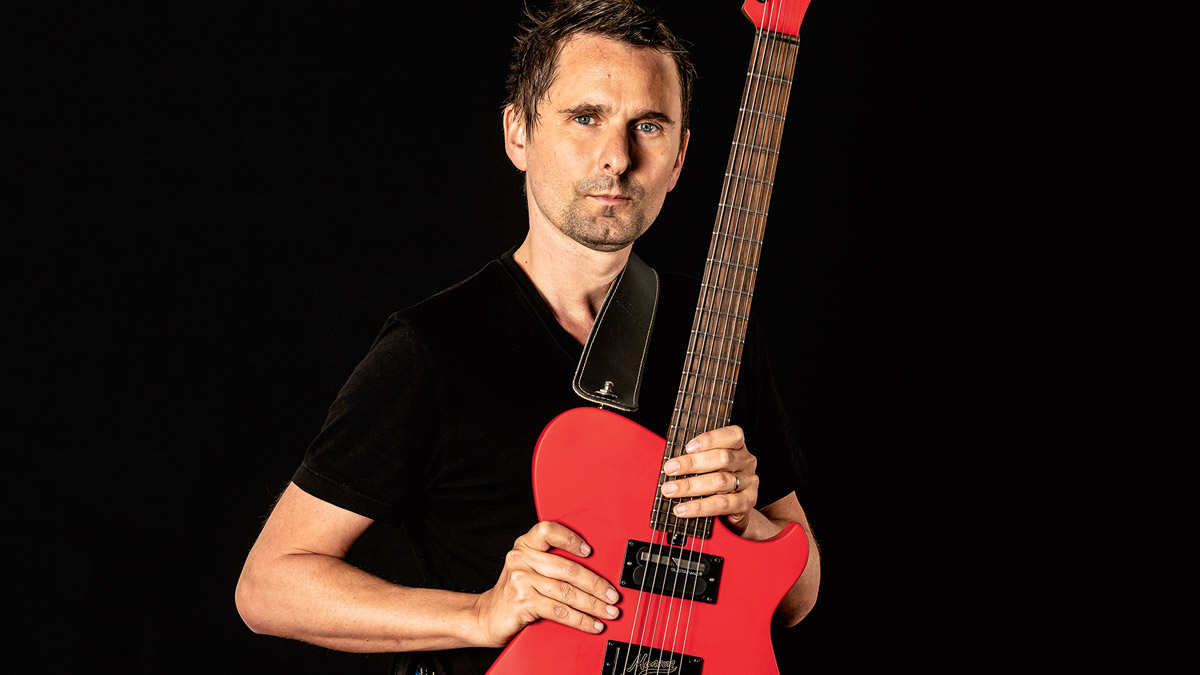
Very interesting. What is it that you liked about Slipknot’s guitar tones?
“They’re a band I should have mentioned earlier. Obviously I’ve known about them for a while but I’ve never really given them a good listen. My son, who is 10 now, has just become a huge Slipknot fan out of the blue. I’ll be driving him to school and he’ll be blasting that out.
My son, who is 10 now, has just become a huge Slipknot fan out of the blue. I’ll be driving him to school and he’ll be blasting that out
“I’d be doing my best to deal with that, but the more I listened the more I realised how amazing the guitar playing was. I think one of them [Jim Root] uses an Orange. So we used a little Orange on those two heavier tracks. I’d never say we were trying to sound like Slipknot – there’s nothing you can do to sound like that band, because they’re just so unique and unbelievable.
“But I feel like we’ve rediscovered them in the last year. I remember when the first album came out way back when. I remember listening to that a fair bit and eventually lost track. I went to see them play in a stadium in LA not long ago and it was just so intense... there’s nothing like that.
“And it was only used a couple of times, but I also recently got this really interesting amp. I don’t even know the name of it, but it’s a Gibson from 1940. It looks like one of those Pignose things, all you’ve got is volume but it sounded amazing because the speaker distorts the more you turn it up.”
How much does theory play a part in your writing? For example, the main lead in Plug In Baby is built out of B Harmonic Minor and Dorian, while other tracks might use classical ideas like secondary dominants...
“I’m mid-level schooled and not particularly advanced when it comes to theory. If I need to analyse something I can probably break it down and describe things the way you are describing things.
“I’m not always thinking that way when I’m creating music. I think there are certain chordal movements that I’ve picked up over the years. I’m an ear player rather than a music reader.
“I did an A-Level in music, it’s not that advanced, but I learned how to counterpoint and write Bach-like stuff without even needing to play anything, just in my head. I’ve always been drawn to things I didn’t fully understand.”

So which musicians inspired you most outside of typical guitar music?
“From the piano world it was people like Rachmaninoff or Liszt. The degree of modulation that happens in their music is still mind-blowing to me. Their level of intelligence in that point of time is comparable to what you see in tech now – the computer programmers of the modern world.
“There was a time when geniuses were breaking boundaries by composing. I had to get my head around a lot of piano stuff. I would sit down and work through all the basics. I don’t have the dexterity or the technique, but learned what chords were working where and why, and how to modulate from this to that.
There are remnants of theory, classical and flamenco in my playing. They’ve stayed with me
“I’m not drawn to standard major and minor scales – it’s more stuff like Harmonic Minor or Phrygian. That comes from a lot of these Russian composers that I liked. They were trying to incorporate folk styles into the classical world. Guitar-wise, the South American composer Villa-Lobos was a big influence on me around 17 when I tried to get serious on flamenco.
“I remember working through some of his etudes. Some of that stuff stayed with me, even though I kinda left a lot behind. There are remnants of theory, classical and flamenco in my playing. They’ve stayed with me, more as little hints than the main thing. I’m more led by the emotional reaction I have than anything theoretical.”
- Will of the People is out now via Warner Records.
Amit has been writing for titles like Total Guitar, MusicRadar and Guitar World for over a decade and counts Richie Kotzen, Guthrie Govan and Jeff Beck among his primary influences as a guitar player. He's worked for magazines like Kerrang!, Metal Hammer, Classic Rock, Prog, Record Collector, Planet Rock, Rhythm and Bass Player, as well as newspapers like Metro and The Independent, interviewing everyone from Ozzy Osbourne and Lemmy to Slash and Jimmy Page, and once even traded solos with a member of Slayer on a track released internationally. As a session guitarist, he's played alongside members of Judas Priest and Uriah Heep in London ensemble Metalworks, as well as handled lead guitars for legends like Glen Matlock (Sex Pistols, The Faces) and Stu Hamm (Steve Vai, Joe Satriani, G3).
“It holds its own purely as a playable guitar. It’s really cool for the traveling musician – you can bring it on a flight and it fits beneath the seat”: Why Steve Stevens put his name to a foldable guitar
“Finely tuned instruments with effortless playability and one of the best vibratos there is”: PRS Standard 24 Satin and S2 Standard 24 Satin review










